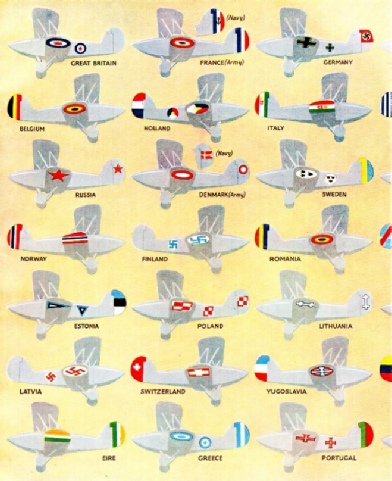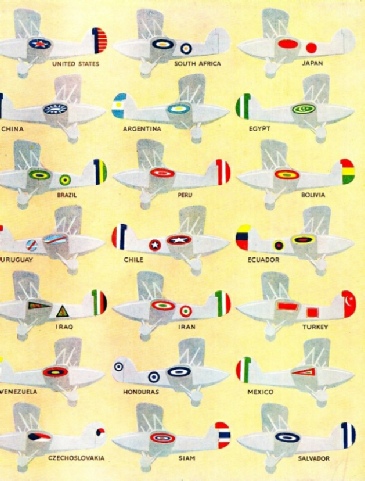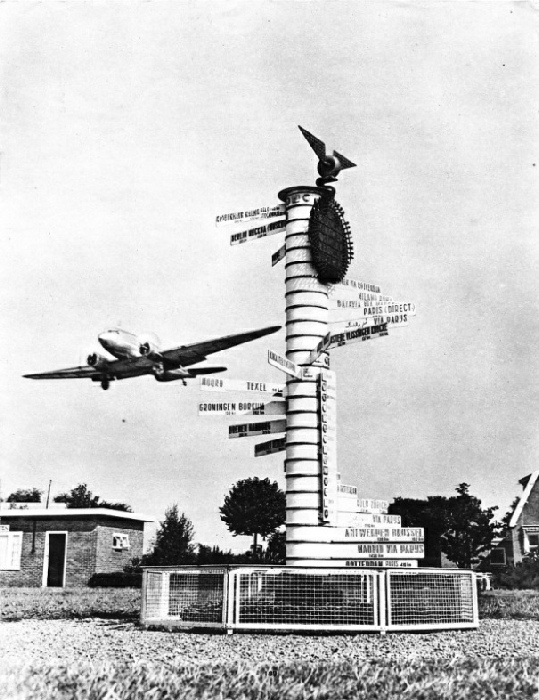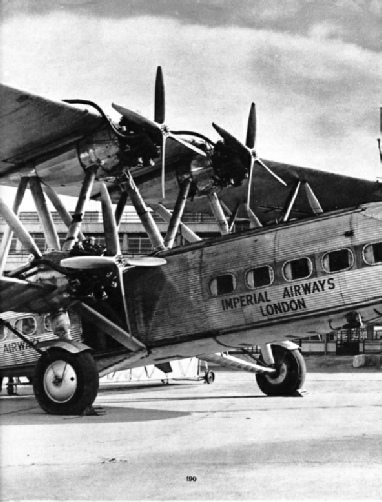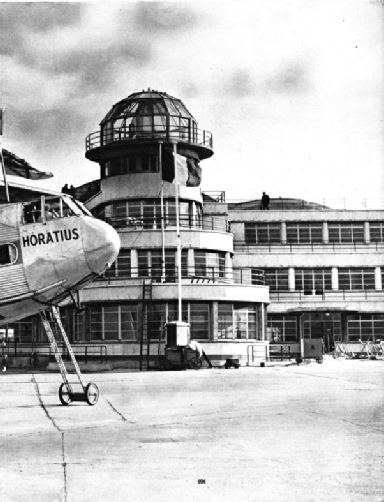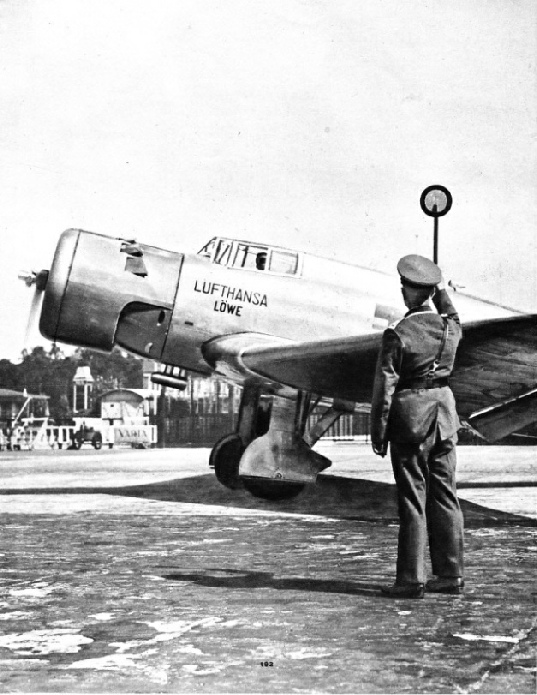
© Wonders of World Aviation 2015-


Part 7
Part 7 of Wonders of World Aviation was published on Tuesday 19th April 1938, price 7d.
This part included a foldout colour plate showing international service markings.
There was also a central photogravure supplement showing various airports. This illustrated the article on Air Traffic Control.
The Cover
Our cover illustration this week shows a Westland Lysander two-seater Army cooperation monoplane, which has a Bristol Mercury engine.
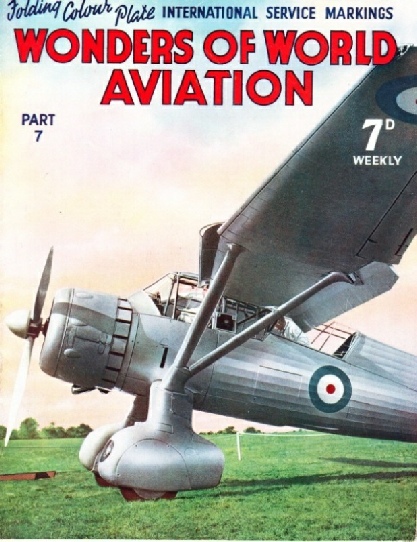
Contents of Part 7
The First Aerial Voyages (Part 2)
The story of the Montgolfier brothers who translated into reality the centuries old dream of flight. They progressed until they saw their balloon ascend with the world’s first aeronauts to make the pioneer voyage into the air. This chapter is concluded from part 6.
All Types of Aircraft Classified
Rigging an Aeroplane
This chapter describes the sequence of operations followed in rigging an aeroplane.
Air Traffic Control
Elaborate ground organizations, depending largely on radio, for ensuring the safety of air travel.
Little seems to be known about air traffic control among the general public. Air traffic depends more and more on efficient radio services, and in Great Britain, because of the frequency of poor visibility, this dependence is great. The control of air traffic is not longer a localized problem. There is now an Inspector of Air Traffic Control. He supervises the traffic side of the Air Ministry's staffs at all the principal airports.
Air Traffic Control
Photogravure Supplement
AERIAL DIRECTION POST at Schiphol Aerodrome, near Amsterdam, Holland. It shows the direction of airports in Europe and the East, and was built for the interest of passengers. A pilot, before he starts, calculates a compass course, taking into account the speed and direction of the wind and the normal cruising speed of his machine. If the wind changes in direction or speed and landmarks are obscured, he may require the help of directional radio. At Croydon, Lympne (Kent) and Pulham (Norfolk), as well as at many aerodromes abroad, there are instruments capable of telling a pilot his position.
Air Traffic Control : Photogravure Supplement
AT LE BOURGET AIRPORT, near Paris. The Imperial Airways liner Horatius is a biplane, one of several flying between London and Paris. It has four Bristol Jupiter air-cooled radial engines, three of which can be see. The total horse-power is 2,200. The maximum speed is about 120 miles an hour and the cruising speed 95-105 miles an hour. The new Le Bourget Airport was opened by M. Albert Lebrun, President of the French republic, in November 1937. The imposing control tower is on the right, behind the nose of the air liner.
Air Traffic Control:
Photogravure Supplement
ALL CLEAR FOR THE START at Tempelhof Airport, Berlin. The aircraft is a Junkers Ju 160. This is a fast cabin monoplane, with a maximum speed at 3,000 feet of 211 miles an hour and a cruising speed of 199 miles an hour. The nine-cylinder radial air-cooled BMW 132A engine develops 750 horse-power. The signal to leave the vicinity of the aerodrome buildings and to taxi across the field, in preparation for the take-off, is given by a panel or disk, such as that held in the official’s right hand.
The Influence of Air Racing
Air racing has had a long and strange career, despite many arguments about its utility value. It was more appealing when it began in the pioneer days of Hendon, when aeroplanes were slow enough to be flown round a course of pylons within full view of the public. Those were the great days when hundreds of thousands of people went by wheel and on foot to London’s flying centre to see such pilots as Hamel, Porte, Lee Temple, Verrier, Grahame-White, Hucks and others disport themselves on contraptions many and varied. Aircraft, however, developed so fast that pylon racing died a natural death, and only long-distance racing could survive.
Fixed Wing Machines
Almost every conceivable arrangement of wings and tail has been tried at some time or another. Almost every form of construction has been used. Yet it is by no means certain that the fixed wing aeroplane, as it is today, is the final pattern to which all future types will conform.
This chapter is the second article in the series on Unorthodox Aircraft.
The Designer of the Avro (Part 1)
The story of Sir Alliott Verdon-Roe, whose biplane of 1908 was followed by many famous designs. Of all names associated with the development of aeronautics that of Alliott Verdon-Roe ranks with the highest. He is an essential part of the progress of flight and a founder of British aviation. It was Roe who, in the days of the front elevator decided to develop the tractor-screw machine without an elevator in front. He thus broke away from the Wright brothers’ policy, and that of other constructors and pilots such as the Farmans and Cody. This chapter provides a full account of the pioneer work of Sir Alliott Verdon-Roe.
This chapter is the fourth article in the series on Makers of Air History.
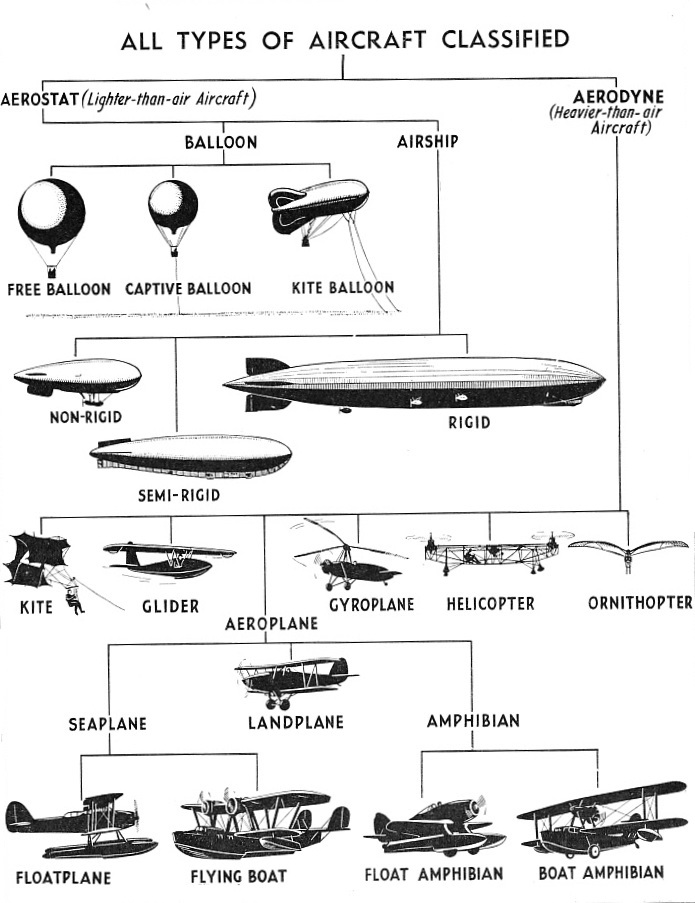
International Service Markings
Colour plate showing how the service aircraft of some of the leading counties of the world are distinguished.
